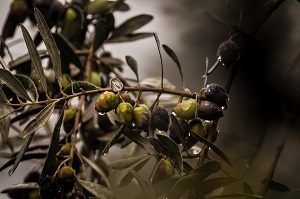How Much Do Olive Trees Cost?
Last Updated on July 24, 2024
Written by CPA Alec Pow | Content Reviewed by ![]() CFA Alexander Popinker
CFA Alexander Popinker
With their distinctive silvery foliage, ornamental appeal, and culinary value for producing olive oil, olive trees make a treasured addition to landscapes and farms. However, purchasing these iconic trees represents a significant investment depending on several factors. Understanding olive tree costs allows buyers to plan and budget accordingly.
Pricing is mainly driven by the tree’s age, size, variety, and source. Mature olive trees that yield fruit quickly cost more upfront but deliver returns sooner. Younger saplings are more affordable to acquire but require years of nurturing before producing. Either way, informed buyers can find quality olive trees at fair prices to reap agricultural, aesthetic, environmental, and financial rewards.
How Much Do Olive Trees Cost?
Olive trees have a cost range from $15 for a starter 1-2 year old sapling in a container up to $5,000 or more for large mature field-grown trees with sprawling canopies that have withstood decades of growth.
To better understand today’s olive tree cost considerations, below are some approximated average price ranges currently seen across age and size categories:
Young Juvenile Saplings
- 1-2 years old – As low as $15 on the low end, up to $45
- 3-4 feet tall container plants – $25 – $65
More Intermediately Established and Branched Trees
- 4-6 years old – Around $45 to $150
- 6-10 feet tall containerized trees – $75 to $250+
Mature Fruiting Specimen Trees
- 10-25+ years old – Approximately $150 to $500
- 10-15 feet tall trees reaching upwards of 15-30 feet – $250 to $1,000+
And taking it further, absolutely monumental aged specimens spanning 40-80+ years old with huge 30–40-foot canopies and enormously thickened trunks can understandably fetch prices of $2,500 to $5,000+ each.
Of course, the pricing spectrum rises even higher for exceptionally rare heritage olive tree varieties as well. Keep size, age, variety, and source firmly in mind when pricing and budgeting.
In Texas, for instance, mature olive trees can command prices of $25,000 or more for larger specimens, particularly those that are around 8 feet tall. This high price reflects both the rarity and the transportation costs associated with such large trees.
In California, where olive trees are more commonly grown, prices can range widely depending on the size and age of the tree. Large Olive Trees, a nursery based in Northern California, specializes in mature olive trees and offers a variety of sizes and types. They provide trees that can range from $1,600 to over $10,000, depending on the specific variety and size.
Web Garden Centre offers various sizes of olive trees, with prices starting at around $540 for smaller specimens. Larger, more mature trees can cost up to $840.
Additionally, Finca Hermosa notes that ancient olive trees can be particularly expensive, with prices for very old trees reaching up to $10,000 or more. This is especially true for trees that are over 1,000 years old, which are rare and highly sought after by collectors and landscapers.
An Overview of Olive Tree Purchasing
Olive trees have been cultivated for thousands of years around the Mediterranean. Today, these hardy evergreen trees are valued worldwide for their ornate silvery foliage, drought and heat tolerance, and edible olives which yield olive oil. Home gardeners, specialty growers, and large-scale producers all invest in olive trees as a versatile addition to landscapes and orchards.
When preparing to buy olive trees, it is important to understand that pricing can range significantly based on the age, size, variety, and source of the tree. Getting informed on average costs enables setting realistic budgets whether buying trees for small gardens or vast groves.
Factors Influencing the Cost of Olive Trees
 Several pivotal variables interact to comprise the current market pricing that sellers of olive trees will charge the end consumer:
Several pivotal variables interact to comprise the current market pricing that sellers of olive trees will charge the end consumer:
- Tree Maturity and Age – More mature olive trees with significantly established thick trunks and scaffold branches reasonably demand higher price tags than comparatively juvenile or adolescent saplings. Mature specimens promise quicker yields.
- Tree Size and Growth Habit – Beyond just age, larger more physically developed olive trees with greater foliage density, more extensive branching, and increased trunk diameter naturally carry higher price tags than smaller or more compact specimens when comparing equivalent ages and varieties.
- Fruiting Variety – With hundreds of named olive cultivars bred over millennia, some varieties bear fruit with superior oil content or other premium qualities. These premium trees fetch understandably higher pricing than standard off-the-shelf selections. Supply of rare heirloom varieties is limited as well.
- Timing of Purchase Transaction – Olive tree availability and pricing tends to fluctuate considerably based on seasonal demand cycles, as late fall and early spring are peak planting times with surging demand. Shop off-season for best deals when supply is high and demand is low. Also, some years see regional shortages in stock availability when harvests or yields disappoint.
- Overall Olive Production Volumes – During periods of lower overall orchard yields and oil output such as after drought seasons, consumer prices across the board on young replacement trees see upward pressure, as supply tightens due to growers holding onto the most robust stock to fill any gaps in their own groves.
- Supplier Geographic Region – Pricing understandably varies based on regional factors like local labor costs, property values, climate growing conditions, and logistics considerations. Shipping trucks of trees cross-country adds noticeable costs. Buying locally saves on transport.
Additional Purchasing Expenses
In addition to the considerable investment the actual olive trees represent depending on the variables above, buyers should thoroughly plan for and account for these common additional purchases and services when budgeting fully:
You might also like our articles about the cost of lemon trees, boxwood shrubs, or Japanese maple trees.
- Shipping and Careful Transport – For larger more mature olive trees, specialized climate-controlled shipping from nurseries and orchards can run $50 all the way up to $500+ per tree depending on distance and logistics. Proper handling prevents damage.
- Orchard Soil Preparation and Planting – Preparing entire fields or individual planting holes correctly helps young trees establish, an investment ranging from $200 for a few specimens up to $2,000+ for volume wholesale orchards. Proper drainage and nutrient balance ensures healthy soil.
- Ongoing Fertilization, Irrigation, and Crop Protection – To keep trees growing at peak vigor and producing optimally, allow for yearly fertilization, watering, and pest/disease control expenses averaging around $50 to $500+ per mature tree. Healthy maintenance maximizes production.
- Pruning and Maintenance Labor – Plan for occasional professional pruning or structural correction averaging $50 to $300+ per tree every few years for mature producing specimens. Proper pruning improves fruiting and structure.
Care costs should fit into your budget projections. Adequate early investment sets trees up for decades of success.
Where to Buy Olive Trees
Being selective and finding experts helps ensure obtaining healthy viable trees priced appropriately:
Specialty Olive Tree Nurseries – These specialized growers offer the widest variety selection and highest level of product expertise and guidance. But with premium service and hand-selected trees comes higher retail costs generally.
Independent Local Garden Centers with Nursery Stock – A good option for conveniently picking up smaller containerized starter olive trees on short notice. However, selection is narrower and knowledge more limited than specialists. But prices are often fair at garden centers.
Big Box Home Improvement Stores – This very affordable option works okay for getting basic off-the-shelf olive varieties in small containers to experiment with before investing more. However, overall plant quality is hit or miss compared to dedicated olive nurseries or local stores.
Mail Order from Online Nurseries – Ordering online allows buying from highly-rated nurseries anywhere in the country and trees shipped directly to your door. But you cannot inspect them in person beforehand, and shipping fees add up, especially for larger trees. Some offer a satisfaction guarantee.
Direct from Established Local Orchards and Growers – Existing olive farmers and grove owners looking to sell off excess stock or replace aging trees sometimes have mature specimens available at wholesale rates. Look for local “pick your own” orchards possibly open to selling.
Pricing and Budgeting Considerations
- Wholesale prices are lower than retail costs when buying in bulk.
- Organically certified trees cost 20-30% more but some prefer them.
- Consider lifetime yields when weighing costs versus benefits.
- Joining co-ops shares shipping fees and unlocks volume discounts.
- Accounts for all short and long-term expenses: soil, fertilizer, irrigation, maintenance.
Investment That Appreciates Over Time
While not inexpensive upfront, olive trees hold their value and yield saleable harvests and olive oil over decades. Investing in quality trees from reputable suppliers is key to maximizing production, sales, and return on investment.
The hands-on experience of nurturing an olive grove or orchard can be immensely rewarding in itself as well. Whether buying trees for a small garden or a sprawling plantation, understanding expenses enables finding fair prices.
Final Words
While olive tree prices naturally fluctuate due to the complex interplay of factors like age, size, variety availability, and seasonal demand, buyers today can expect to spend anywhere from $15 up to more than $5,000.
Although a serious investment, robust and thoughtfully chosen olive trees that are planted and cared for properly can continue producing signature olive fruit for oil and curing for many generations of enjoyment, essentially becoming priceless over their considerable lifetimes.
With prudent planning, good cost comparisons, and thorough research into suppliers, the purchase of one or more olive trees represents an immensely rewarding investment in agricultural efficiency, natural beauty, and acquiring a bit of living history in your own backyard that you can pass down proudly.
Answers to Common Questions
How many years can some olive trees survive?
Thanks to their resilience and longevity, a healthy, well-maintained olive tree can continue thriving and fruiting for hundreds of years when adequately protected from disease and extreme winters.
Historic olive trees in the Mediterranean have been documented at over 2,000 years old. With attentive care of the tree health and pruning practices, an olive tree can easily outlive the generations that planted and tended to it.
How long do olive tree branches last in water?
When properly cut, olive branches can generally last up to 2-3 weeks as cuttings in a vase indoors before drying out. Avoid overcrowding branches, use clean shears, change the water every 2 days, and add commercial flower nutrients to the vase water.
Keeping the vase out of direct sunlight also prolongs the olive branches’ vase life. Their silver-hued leaves provide unique interest and texture for floral arrangements.
How quickly do olive trees grow?
If kept healthy through attentive care and favorable growing conditions, young olive trees tend to grow relatively quickly in their juvenile years, averaging gains of around 2-3 feet in height annually.
However, linear vertical growth eventually slows down, with mature trees growing only about 1 foot of new growth per year. Total time to reach peak bearing maturity starting from a sapling averages 8-12 years for most varieties, but fruiting can start on a small scale after just 4-5 years. Proper nurturing rewards patience.

Leave a Reply
Want to join the discussion?Feel free to contribute!